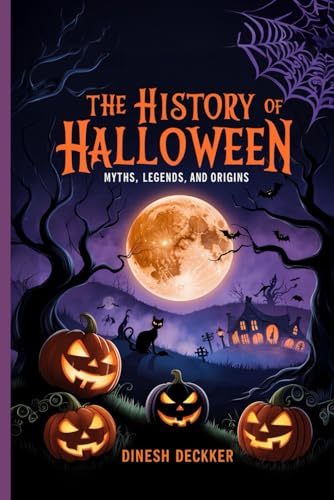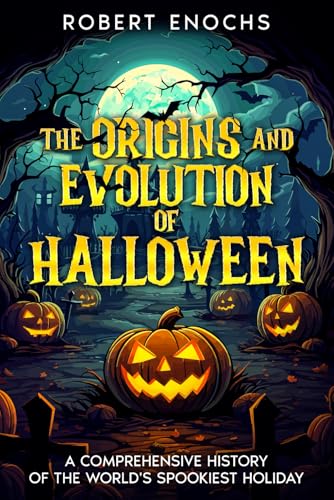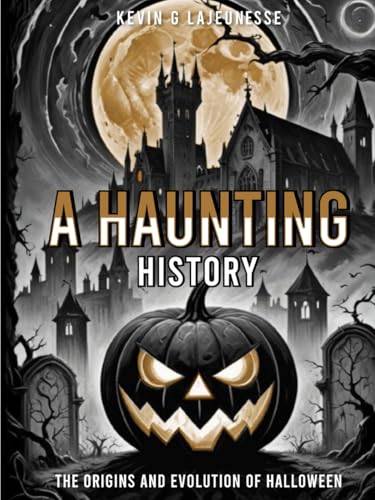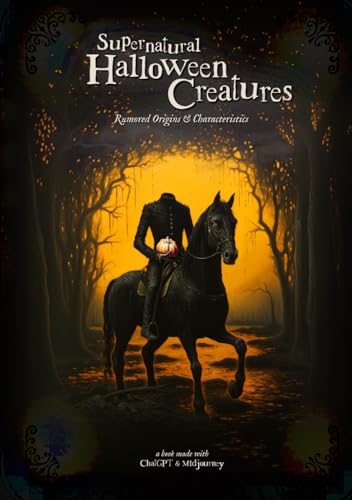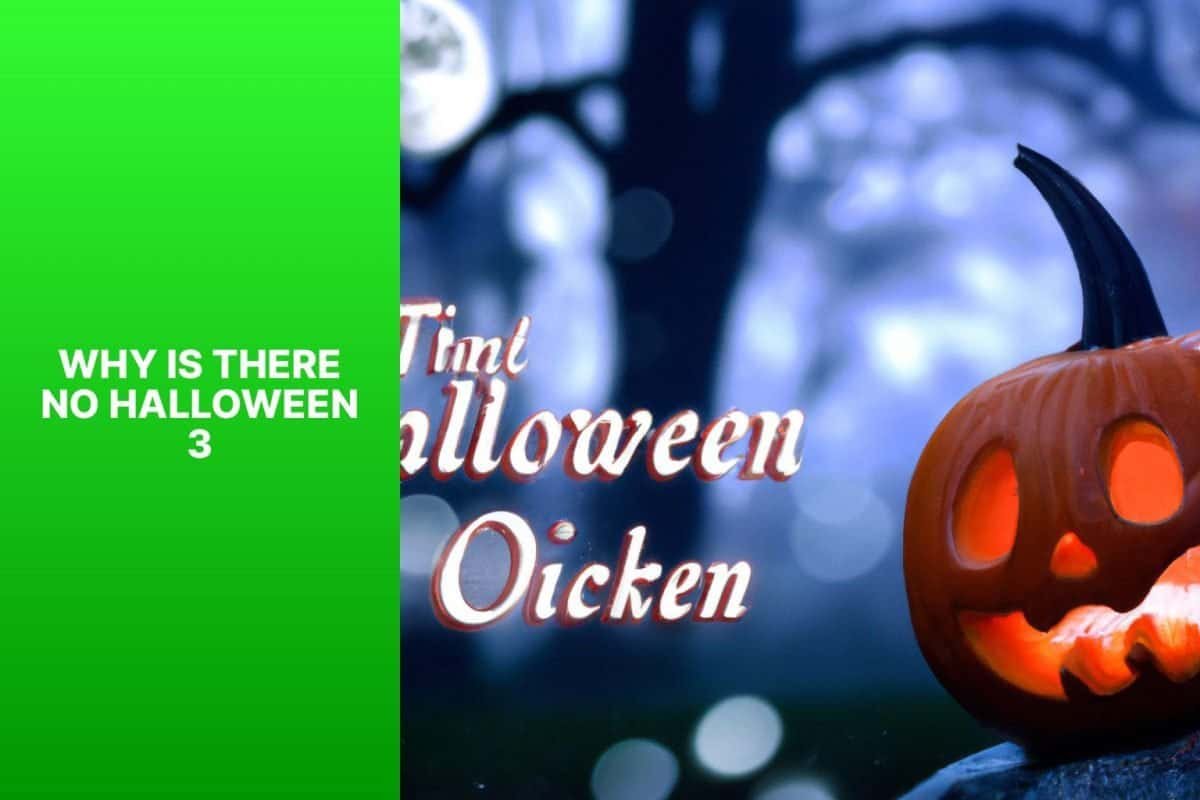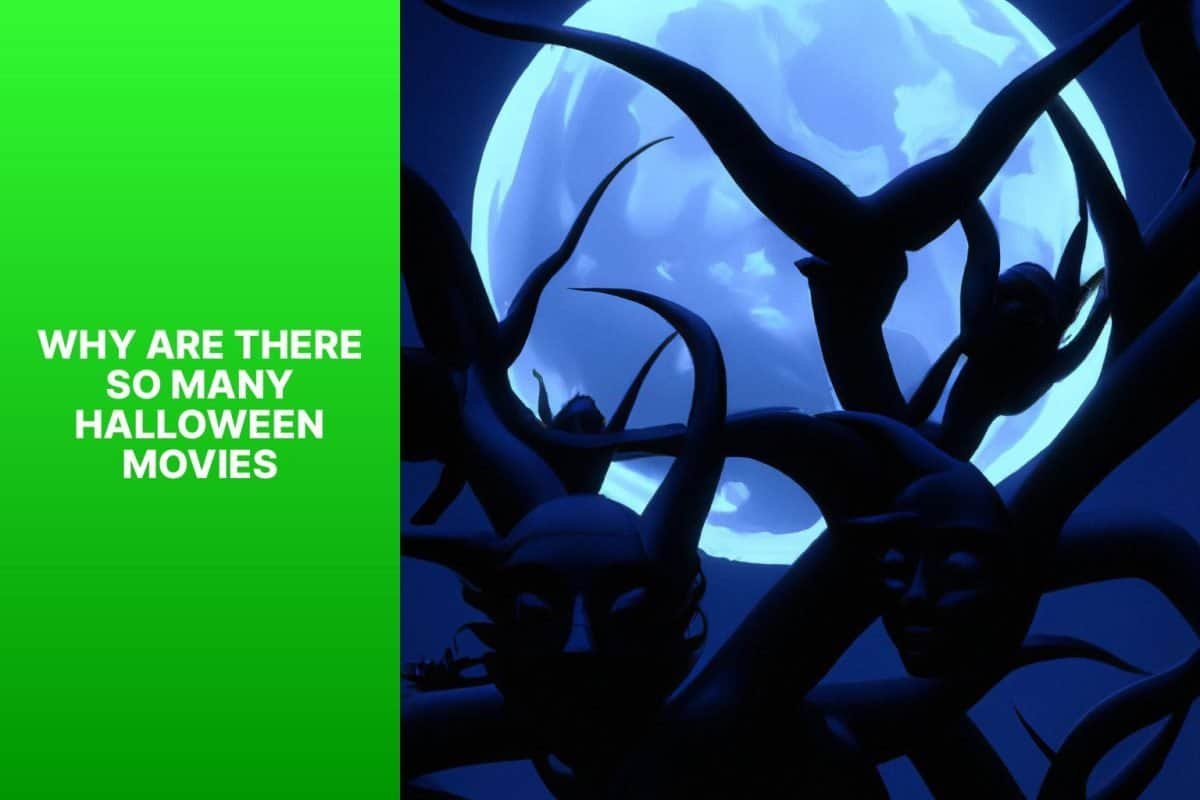Halloween, celebrated on October 31st each year, is a holiday filled with costumes, candy, and spooky festivities. There is a persistent myth surrounding Halloween that claims it to be Satan’s birthday. In order to understand the truth behind this misconception, it is important to explore the historical origins of Halloween, debunk the myth itself, and delve into the religious significance and symbolism of this holiday.
The historical roots of Halloween can be traced back to two main sources. The Celtic festival of Samhain, which marked the end of the harvest season and the beginning of the darker half of the year. The influence of Christianity on Halloween, particularly through the All Saints’ Day and All Souls’ Day celebrations.
Debunking the myth of Halloween being Satan’s birthday requires a closer look at the origins of this belief. It is crucial to understand that Halloween has evolved over time and has absorbed various customs and traditions from different cultures. The association of Halloween with Satan’s birthday is a misconstrued interpretation that lacks factual basis or religious consensus.
Examining the historical and cultural backgrounds surrounding Halloween further dismisses the myth. While some religious groups may view Halloween as conflicting with their beliefs, it is important to recognize that the holiday has many diverse interpretations, and its celebration is not inherently tied to Satanism.
Moving beyond the mythology, Halloween holds religious significance for various communities. Religious observances associated with Halloween differ across different cultures and religious practices. From a Christian perspective, Halloween can be seen as an opportunity to commemorate the souls of the departed and reflect on themes of mortality and redemption.
The symbolism and imagery of Halloween, such as jack-o’-lanterns and costumes, also hold cultural and historical significance. Jack-o’-lanterns, originally created from turnips or potatoes, were used to ward off evil spirits. Costumes, on the other hand, can be seen as a way to connect with ancestral traditions and folklore.
- Halloween is not Satan’s birthday: The myth that Halloween is Satan’s birthday is debunked, as it does not have any historical or cultural basis.
- Halloween originated from ancient traditions: The origins of Halloween can be traced back to ancient Celtic and Roman festivals, which were later influenced by Christian traditions.
- Halloween has religious significance: While Halloween has evolved into a secular holiday, it still holds religious observances and is viewed differently from a Christian perspective.
Historical Origins of Halloween
Halloween has historical origins that can be traced back to the ancient Celtic festival of Samhain. This festival, celebrated on October 31st, signified the end of the harvest season and the beginning of the darker half of the year. The Celts believed that during this time, the boundary between the living and the dead was blurred, allowing spirits to freely roam the Earth.
To protect themselves from these spirits, the Celts would light bonfires and don costumes. They also believed that the presence of spirits made it easier for their religious leaders, known as the Druids, to predict the future. These predictions played a crucial role in preparing for the upcoming winter and ensuring the survival of their communities.
When the Romans conquered Celtic territories, they incorporated their own traditions into Samhain. One of these traditions was Feralia, a day in late October dedicated to honoring the deceased. Another was a festival held in honor of Pomona, the Roman goddess associated with fruit and trees. This might explain the popular Halloween game of bobbing for apples.
With the spread of Christianity, the church sought to replace pagan festivals with Christian celebrations. In the 9th century, November 1st was designated as All Saints’ Day or All Hallows, a day to honor all saints. The night before, October 31st, became known as All Hallows’ Eve, eventually shortened to Halloween. Over time, Halloween evolved by incorporating both Christian and pagan traditions, becoming the holiday we recognize today.
The Influence of Christianity on Halloween

Photo Credits: Rickyshalloween.Com by Joseph Williams
The Influence of Christianity on Halloween
Christianity has significantly influenced Halloween, shaping its traditions and practices. Initially, Halloween celebrated the eve of All Saints’ Day, a Christian holiday honoring saints and martyrs. It later incorporated elements from Celtic harvest festivals and pagan beliefs. Many iconic Halloween symbols, like pumpkins and costumes, have Christian origins. Carving pumpkins into jack-o’-lanterns dates back to an Irish folktale about a man named Stingy Jack, who was denied entry into heaven and hell. Costumes were worn to ward off evil spirits, aligning with Christian beliefs of protection.
Today, Christian churches organize alternative festivities, such as trunk-or-treat events, to provide a safer environment for children. These events aim to celebrate community spirit while emphasizing Christian values. By engaging with Halloween, Christians have adapted the holiday to align with their faith while participating in broader cultural festivities.
To incorporate Christian elements into your Halloween celebrations, consider attending a church-hosted event or researching the history behind Halloween traditions. Learn about the connections between Christian holidays and Halloween to deepen your understanding. Use the occasion to reflect on the values and teachings of Christianity, such as compassion, kindness, and embracing community. By infusing these values into your celebrations, you can enjoy Halloween while staying true to your Christian beliefs.
Commercialization and Modern Traditions of Halloween
The commercialization and modern traditions of Halloween have had a significant impact on this holiday. Halloween has become extremely commercialized, with stores and businesses taking advantage of the opportunity to sell costumes, decorations, and candy. Trick-or-treating, costume parties, and pumpkin carving have all become popular activities during Halloween.
The commercialization of Halloween has led to an increase in consumer spending. Americans now spend billions of dollars each year on Halloween-related items, including costumes, decorations, and treats for trick-or-treaters.
Social media has also played a role in transforming Halloween into a holiday focused on visual presentation. People showcase their creativity through elaborate costumes and decorations, competing to have the best outfit or the most intricately carved pumpkin. These activities contribute to the modern traditions associated with Halloween.
Furthermore, Halloween has gained recognition worldwide, as countries across the globe adopt the holiday and incorporate their own cultural traditions. For example, in Mexico, they celebrate Dia de los Muertos, or Day of the Dead, which coincides with Halloween and is a time to honor deceased loved ones.
In fact, according to the National Retail Federation, Americans spent approximately $8.05 billion on Halloween candy alone in 2020, despite the challenges posed by the COVID-19 pandemic. This statistic highlights the continued commercialization and consumer interest in Halloween.
Debunking the Myth: Is Halloween Satan’s Birthday?
Is Halloween really Satan’s birthday? Let’s dig deeper into this myth and separate fact from fiction. In this section, we will explore the origins of this pervasive belief and delve into the historical and cultural backgrounds that have shaped our understanding of Halloween. Unveiling the truth behind this myth will give us a fascinating glimpse into the rich tapestry of Halloween traditions and beliefs around the world.
Understanding the Origins of the Myth
The myth that Halloween is Satan’s birthday originates from misunderstandings and misconceptions.
Halloween, originally known as Samhain, was a Celtic festival marking the end of the harvest season and the beginning of the dark half of the year.
It was believed to be a time when spirits could cross over into the earthly realm.
Christianity later sought to replace these pagan traditions with its own celebrations.
All Saints’ Day, also known as All Hallows’ Day, was established to honor saints and martyrs.
The night before, which was the traditional Samhain celebration, became known as All Hallows’ Eve, or Halloween.
Over time, misconceptions led to the myth that Halloween is Satan’s birthday.
This myth disregards the historical context and religious significance of Halloween.
It is important to understand the origins of this myth to appreciate the true meaning and significance of Halloween.
Understanding the origins of the myth allows us to appreciate the true meaning and significance of Halloween.
It offers an opportunity to learn from history and embrace the rich cultural heritage associated with this holiday.
Examining Historical and Cultural Backgrounds
Halloween’s history and cultural backgrounds are worth exploring. It can be traced back to the ancient Celtic festival of Samhain, which marked the end of harvest and the beginning of winter. The Celts believed that on October 31st, the boundary between the living and the dead was blurred, allowing spirits to roam freely.
Over time, Halloween absorbed various cultural influences. Christianity attempted to replace Celtic traditions with religious observances like All Saints’ Day and All Souls’ Day. Pagan customs associated with Samhain persisted and were assimilated into Christian celebrations.
In the 19th century, Irish and Scottish immigrants brought Halloween customs to America, where it evolved into the holiday we know today. Commercialization added practices like trick-or-treating, costume parties, and haunted attractions.
Understanding the historical and cultural backgrounds of Halloween gives insights into its evolution and significance. It demonstrates how ancient Celtic traditions, Christian influences, and modern commercialization shaped the holiday we celebrate now.
Pro-tip: To fully appreciate Halloween, learn about its historical and cultural origins. Understanding the origins of traditions and customs can deepen your appreciation for this festive holiday.
The Religious Significance of Halloween

Photo Credits: Rickyshalloween.Com by Roy Clark
When it comes to the religious significance of Halloween, there is much to explore. From religious observances associated with this holiday to the Christian perspective on Halloween, we’ll delve into the intriguing world of faith and folklore surrounding this beloved occasion. Prepare to uncover hidden rituals, traditions, and understand the varied religious perspectives that shape our understanding of Halloween. Let’s dig deeper into the spiritual tapestry that weaves through this mystical day.
Religious Observances Associated with Halloween
Religious observances associated with Halloween are a significant part of the celebration. These observances encompass both Christian traditions and pagan rituals. Examples of these observances include:
– All Saints’ Day: This Christian holiday, which takes place on November 1st, is dedicated to honoring all saints, both known and unknown. It is a time for believers to remember and celebrate the lives of those who have passed away and reached heaven.
– All Souls’ Day: Taking place on November 2nd, this day is dedicated to praying for and remembering the souls of the faithful departed. People offer prayers, attend Mass, and visit cemeteries to honor their loved ones who have passed away.
– Holy Vigil: Some Christian denominations hold a special vigil or prayer service on the evening of October 31st, which is known as All Hallows’ Eve. This service serves as preparation for the upcoming celebrations of All Saints’ and All Souls’ Day.
– Harvest Festivals: Many churches organize harvest festivals around Halloween, focusing on gratitude for the abundance of the harvest season and offering thanks to God for His blessings.
By participating in these religious observances, individuals have the opportunity to deepen their spiritual connection and engage in Halloween traditions. You may consider attending an All Saints’ Day service at your local church, visiting the cemetery to honor your loved ones on All Souls’ Day, or taking part in a harvest festival organized by your community or church.
Christian Perspective on Halloween
The Christian perspective on Halloween varies among denominations and individuals. Some Christians see Halloween as a harmless cultural celebration, focusing on costumes, trick-or-treating, and community festivities. They view it as an opportunity to engage with their neighbors and share the light of Christ in a non-threatening way. Other Christians have concerns about the pagan origins of Halloween and choose not to participate. They may believe that Halloween conflicts with their Christian beliefs and values, seeing it as a time when evil and darkness are celebrated. Instead, they prefer to focus on more positive and edifying activities.
Certain churches and Christian organizations organize alternative events on Halloween, such as “Harvest Festivals” or “Fall Carnivals.” These events provide a safe and family-friendly environment for children and families to enjoy games, music, and fellowship.
Ultimately, the Christian perspective on Halloween is personal and individual. Some Christians fully embrace the holiday as an opportunity for outreach, while others have reservations or choose not to participate. It is important for each believer to prayerfully consider their own convictions and seek guidance from God on how to approach Halloween.
The Symbolism and Imagery of Halloween
Discover the captivating world of Halloween’s symbolism and imagery. From the enigmatic Jack-o’-Lanterns and their profound symbolism to the historical significance of costumes, this section will unveil the hidden meanings that lie beneath Halloween traditions. Delve into the rich folklore and captivating visual elements that make Halloween a truly remarkable celebration. Unveil the secrets behind the well-known symbols and embrace the fascination and enchantment that Halloween brings.
Jack-o’-Lanterns and Their Symbolism
Jack-o’-Lanterns have always been an integral part of Halloween, symbolizing the holiday in its true essence. These uniquely carved pumpkins with candles inside are commonly used as decorations during this festive season.
The origins of Jack-o’-Lanterns trace back to Irish folklore, drawing inspiration from the legend of Stingy Jack, a cunning individual who managed to outsmart the devil. When Jack passed away, he was neither accepted in heaven nor condemned to hell, forcing him to wander with nothing but a lantern made from a turnip. The carved faces on Jack-o’-Lanterns represent the malevolent spirits that Jack successfully trapped.
In contemporary times, Jack-o’-Lanterns are thought to possess the ability to ward off evil spirits, making them a significant part of Halloween traditions. They are believed to safeguard homes during this spooky time of the year. They serve as a means for individuals to showcase their creativity and artistic talents. People meticulously carve intricate designs on pumpkins, adding to the festive spirit of the holiday.
To further enhance the symbolism of Jack-o’-Lanterns, it is advisable to incorporate unique elements into your designs. Experiment with different facial expressions or include other symbolic figures of Halloween, such as bats or witches. Do not limit yourself to pre-made patterns; instead, let your imagination run wild.
Whether you opt for a traditional or modern design, one thing remains clear – Jack-o’-Lanterns play an indispensable role in Halloween celebrations. They bring a touch of whimsy and represent the triumph of light over darkness. Therefore, embrace the true spirit of Halloween by crafting your own Jack-o’-Lantern and bathe the night in its flickering glow.
Costumes and Their Historical Significance
Costumes have always played a significant role in the history of Halloween, symbolizing and connecting with various cultural traditions. Throughout the centuries, costumes have represented supernatural figures, served as a defense against evil spirits, and celebrated the changing of seasons.
1. Ancient Traditions: Costumes have been an integral part of Halloween for centuries. In ancient Celtic rituals, people utilized disguises made from animal heads and skins as a means to ward off malevolent spirits and provide protection.
2. Role Reversal: During the medieval period, costumes challenged social norms and hierarchies. Commoners would dress as nobles and vice versa, allowing for temporary role reversal and fun during Halloween festivities.
3. All Hallows’ Eve: In Christian traditions, costumes were introduced as an homage to and remembrance of saints. On All Hallows’ Eve, also known as the night before All Saints’ Day, people would dress as saints, angels, or demons.
4. Trick-or-Treating: The practice of dressing in costumes and going door-to-door for treats gained popularity during the late 19th century. Children would often dress as ghosts, witches, or other supernatural beings, influenced by popular literature and folklore.
5. Pop Culture Influence: In recent years, costumes inspired by popular culture, such as movie characters, superheroes, and celebrities, have gained immense popularity. These costumes reflect current trends and allow individuals to express their interests and showcase their creativity.
Frequently Asked Questions
Q1: Is Halloween really Satan’s birthday?
A1: No, Halloween is not Satan’s birthday. The idea that Halloween is Satan’s birthday is a man-made appointment and not supported by scripture. There is no specific date for Satan’s birthday mentioned in the Bible.
Q2: When was Satan created?
A2: Satan was created by God before our calendar days were established. The Bible does not specify Satan’s birthday or when he was created, but it provides a description of how God created Satan in Ezekiel 28:12-28.
Q3: What are the origins of Halloween?
A3: Halloween has different origins depending on the interpretation. One group of scholars suggest that Halloween started as a Christian celebration known as All Saint’s Day, while another group believes it has pagan roots and originated from the Celtic people who celebrated the Samhain festival on November 1st in the British Isles.
Q4: Should Christians celebrate Halloween?
A4: Christians have different opinions on whether or not to celebrate Halloween. Some choose not to celebrate at all, while others participate in church Harvest Festivals or go trick-or-treating. It is important to respect and not be judgmental towards others who have different beliefs about Halloween.
Q5: How can Christians celebrate Halloween without compromising their faith?
A5: Christians who celebrate Halloween can do so in a way that aligns with their faith and the basic principles of Christianity. They can choose to engage in activities that promote love, generosity, and kindness, such as giving out candy to neighborhood kids or participating in community celebrations. It is important to represent Jesus through our actions and use Halloween as an opportunity to engage in conversations about spirituality and share the gospel.
Q6: Is it okay to call Halloween Satan’s birthday?
A6: Calling Halloween Satan’s birthday is not accurate and can be misleading. It is more beneficial for believers to agree to disagree on the origins and spiritual overtones of Halloween and focus on living according to the Holy Spirit’s leading without judgment towards others. Ultimately, Christians can choose to reclaim Halloween as a day to overcome evil with good and celebrate Jesus instead of appointing it as the enemy’s birthday.







